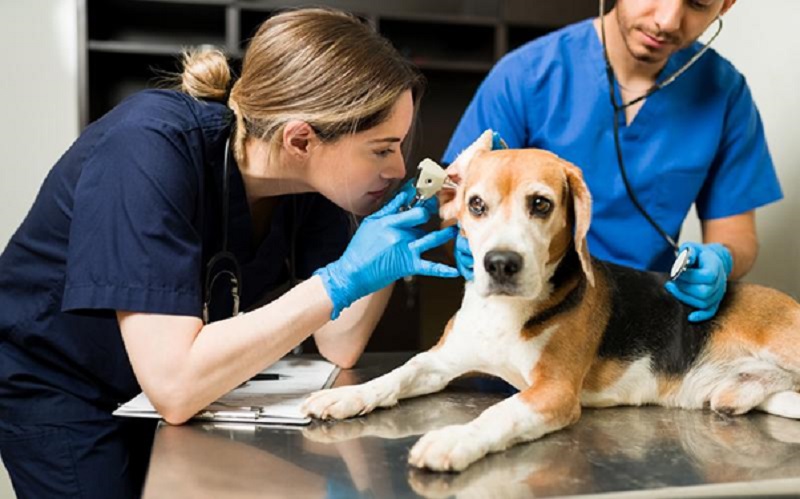When a pet experiences a sudden illness or injury, every minute matters. Knowing what to do before reaching an emergency vet clinic can make a major difference in your pet’s recovery. In Singapore, many clinics and animal hospital facilities are equipped to handle urgent situations around the clock. Yet, preparation before arrival can help the veterinary team provide faster and more effective treatment.
Recognising a Pet Emergency
The first step in responding to a crisis is recognising when your pet needs urgent care. Some warning signs include heavy bleeding, breathing difficulties, vomiting, seizures, or sudden collapse. Cats and dogs may also show signs of pain by hiding, whining, or refusing to eat. When in doubt, it is always safer to treat the situation as an emergency. Quick action ensures that your pet receives the attention needed to prevent further complications.
Contacting the Emergency Vet Clinic in Advance
Before heading to the clinic, call ahead to inform the staff about your pet’s condition. This allows them to prepare necessary equipment or medication before your arrival. Provide clear details about symptoms, how long they have persisted, and any first aid measures you have taken. If possible, share your estimated time of arrival. Clear communication helps the emergency vet clinic prepare for immediate care once you reach the facility.
Keeping Calm and Managing the Situation
Remaining calm is vital during emergencies. Pets can sense anxiety, and staying composed helps you act quickly and safely. Speak gently to your pet and avoid sudden movements. If there is bleeding, apply gentle pressure with a clean cloth. For breathing issues, keep your pet’s airway clear and place them in a comfortable position. Avoid giving any human medication, as it can cause more harm than good. Focus on stabilising your pet until you reach professional care.
Preparing a Pet Emergency Kit
A well-prepared emergency kit can be lifesaving. It should include gauze, antiseptic wipes, bandages, scissors, gloves, and a digital thermometer. Keep essential information such as your vet’s contact number, emergency clinic address, and your pet’s medical records within easy reach. Some pet owners also keep saline solution and a soft towel for handling injured animals safely. Having this kit readily available can help manage a crisis during transport or while waiting for professional help.
Handling Transport Safely
Transporting an injured pet requires care and attention. Use a carrier or sturdy box for small animals, ensuring it is lined with a soft towel. For larger pets, use a blanket as a makeshift stretcher to prevent further injury. Avoid sudden movements and ensure your pet is secure during transport. If possible, have someone accompany you to the clinic so you can focus on driving safely. Keeping the car well-ventilated helps your pet stay calm on the way to the animal hospital.
Bringing Medical Records and Information
Having your pet’s medical records ready saves valuable time during an emergency. Bring vaccination documents, medication lists, and any previous test results. These records help the vet understand your pet’s history and determine suitable treatments quickly. If your pet is on any ongoing medication, bring it along for reference. Clear documentation ensures the clinic can make informed medical decisions immediately.
Understanding How Animal Hospitals Operate
Upon arrival, the animal hospital team assesses the situation and prioritises treatment based on urgency. Critical cases are attended to immediately, while stable patients may wait briefly for assessment. The vet will conduct a physical examination and may recommend tests such as X-rays or blood work. Emergency clinics operate with specialised staff trained to handle a wide range of critical conditions, from trauma to poisoning. Understanding this process helps owners stay patient and cooperative during treatment.
Communicating Clearly with the Vet
Once you reach the clinic, provide accurate details about your pet’s symptoms and any first aid steps taken. Describe changes in behaviour, appetite, or mobility leading up to the emergency. Clear communication allows the vet to diagnose more efficiently. Ask questions if you need clarification on treatment or follow-up care. Being proactive helps ensure that your pet receives appropriate medical attention without delay.
Learn More: Calmer, Positive Vet Visits: Pet Unity Q&A with Dr Esther
Planning for Post-Emergency Care
After your pet is stabilised, follow the vet’s recovery instructions carefully. This may include administering prescribed medication, monitoring specific symptoms, or scheduling follow-up visits. Provide a quiet, comfortable space for your pet to rest at home. Keep communication open with the clinic in case of recurring symptoms. Proper post-emergency care helps ensure a full recovery and reduces the likelihood of future complications.
Staying Prepared for Future Emergencies
Every pet owner should know where the nearest emergency vet clinic is located. Save their contact details and operating hours in your phone. Familiarising yourself with the clinic’s location helps you respond quickly in unexpected situations. Pet emergencies can happen at any time, and preparation is key to reducing stress and improving outcomes.
Knowing what to do before arriving at an emergency vet clinic can save precious time and increase your pet’s chances of recovery. With preparation, calmness, and professional veterinary care, pets can recover safely even in critical situations.
For more information about vet care, contact Paws N’ Claws today.





